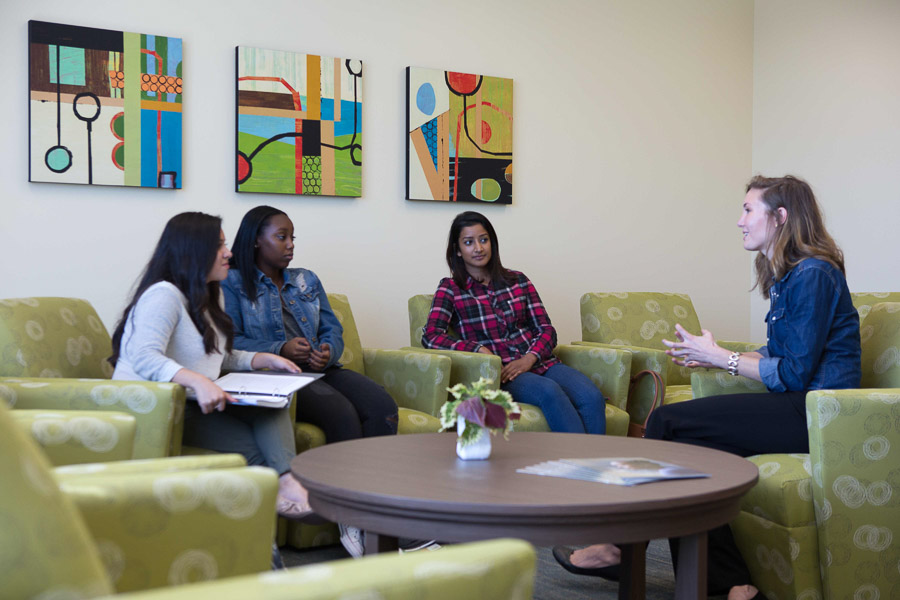A new pilot study attempts to integrate the principles of Open Dialogue into an approach to family assessment in children’s social care (CSC) departments in the UK. The project included a collaborative process of restructuring case assessment procedures within the CSC department, the creation of a manual based on this new structure, and the implementation of this new approach centered on principles of Open Dialogue, emphasizing listening and full-team involvement.
The findings of the pilot, published in the Journal of Family Therapy, suggest that the Open Dialogue-guided initiative may be successful based on feedback from a small sample of participants, including both professionals and families. The authors, Martin Clement, an administrator of child services, and Richard Kenny, a systemic psychotherapist, explain the impetus for the project:
“In crisis situations, care must be taken to develop contexts for listening. The wider political and policy context of contemporary of CSC services creates particular challenges for the development of listening practices. The model seeks to develop listening practices that attend to these challenges.”

In recent decades, highly publicized, post-tragedy inquiries into cases concerning child welfare in the UK have led to increased assessment caseloads for social workers. Public scrutiny, and growing accountability pressures imposed on social workers to document their assessments, have shifted attention from prevention to what has been characterized as a return to reactive strategies.
The 2007 death of 17-month-old Peter Connelly is just one of a series of well-known events garnering significant public attention that served to intensify standards for assessment of children and families identified through CSC referrals. Both referrals and accountability measures have increased in the absence of sufficient support to provide families post referral, contributing to a cyclical referral process largely unconstructive for families and providers alike. According to Clement and Kenny,
“Referrals to CSC services only rose by 6 percent in England between 2009–2010 and 2015–2016; however, there was a 93 percent increase in child protection investigations.”
In other words, assessment has been ramped up while prevention and response to assessment have received less attention in policy and practice. In addition to systematic barriers preventing social workers from meeting assessment demands and contributing to increases in provider anxiety, the authors suggest that these patterns are “increasing stress on and causing harm to a growing number of families.”
They also indicate that resources being channeled into assessment are reducing resources available for providing concrete help to children and families. An additional issue within this framework is that, due to the pressure to be efficient, social workers completing assessments may not be equipped to listen effectively to the families with whom they are briefly linked.
Clement and Kenny distinguish between “dialogicity” and Open Dialogue in outlining the initiative designed for their study. Open dialogue is a well-established practice model guided by a set of structured principles, whereas dialogicity is a more abstract theoretical approach emphasizing provider presence and unconditional respect. Dialogicity underlies Open Dialogue.
Open dialogue originated in Finland and has been applied in diverse contexts in support of individuals facing periods of distress to reduce the need for long-term supports. It has been met with some success, with impact seeming to vary according to context. Open dialogue, dialogic praxis, and co-production prioritize user/client/family voice in assessment and intervention processes.
This may be the first study to apply Open Dialogue to the assessment of children and families through a CSC department. When the research was conducted, the first author was a service manager at the CSC site featured in the project, and the second author was a family therapist.
This particular CSC was receiving approximately 140 referrals for assessments each week and had received consistent feedback from families served that procedures were unclear, support was often delayed, and, importantly, parents indicated that they did not feel listened to.
Clement and Kenny collaborated with social workers and other team members within the CSC department to construct a contextually appropriate, Open Dialogue informed approach. Authors also drew from Glenda Fredman and Alan Jenkins’ proposed systems for cultivating circumstances for engagement.
A manual – designed to be perpetually developed and revised – was assembled by the authors that applied Open Dialogue to CSC contexts, including the following commitments to families:
- Immediate help (emphasizing speed in service)
- A social network perspective (allowing families to include anyone of their choosing in the team process)
- Flexibility and mobility (meetings could happen wherever families felt most comfortable and for whatever amount of time was necessary)
- Responsibility (designated responsibilities would be established for all those, professional and family-related, involved in the case)
- Psychological continuity (providing opportunities for the young person or people central to the case to continue to reach out for supports if needed)
- Tolerance of uncertainty (respect for family agency, emphasizing tolerance for loose ends to a certain degree as families juggle complex demands)
- Dialogue and polyphony (commitment to listening and reciprocity in engagement)
“Since flexibility, tolerance of uncertainty, and dialogue are amongst the principles of an [Open Dialogue] approach, we decided the manual should remain permanently in draft form and would be developed by the group through discussion and debate…”
According to the new system developed, children involved in the pilot would be seen as independent of their families and at home within 72 hours of referral. Then one full team meeting guided by Open Dialogue would be arranged within ten days of the initial referral. The whole team meeting would occur in lieu of the previous system involving less predictable meeting timelines and less clarity regarding how many meetings would occur.
Meetings involving family members and others deemed significant by family, social workers, and other team members were to be facilitated by a trained “conductor” whose role would be to moderate the discussion without occupying too much space in the dialogue. Meetings would not have a time limit to reduce arbitrary constraints imposed on families in communicating their perceptions and needs.
Only one designated note-taker would take notes on a flipchart or whiteboard, and the full group would review and approve the notes that would ultimately be the only documentation of the process. No configuration of team members would be permitted to meet to discuss the case in the absence of the family, and after the meeting, the next steps for all parties would be made clear.
“In total twenty-two OD meetings, concerning forty children, were arranged over twelve weeks. Referring reasons included concerns about domestic abuse (the most prevalent concern), child neglect, adult mental health difficulties, and, in one case, a child who had been remanded into the care of the local authority.”
All parents whose children’s cases were addressed in this project, many of whom were in the midst of extraordinarily challenging moments for their families, “spoke positively about the contact they had with the social worker and partner agencies.”
Some logistical concerns were noted by some participating social workers, such as the logistical challenge posed by the absence of a time-limit characteristic of the new manualized approach and difficulty plugging the system into statutory documentation platforms. However, professionals involved also commented on the essence of security and kindness that emerged in the Open Dialogue situated team meetings, and some liked the structure. The authors write:
“We have been encouraged by our experiences and propose that this approach could be developed more widely as a safe, respectful, efficient, and effective way of engaging children and their families in the difficult process of assessing and responding to safeguarding and child protection concerns.”
Results from this pilot study show that there may be room for further application of Open Dialogue in social work, specifically in assessment procedures that have not historically provided space and time for families to share fully, nor for the opportunity for professionals to listen fully to the families with whom they have committed to supporting.
****
Clement, M., & Kenny, R. M. (2019). Developing an Open Dialogue inspired model of systemic social work assessment in a local authority children’s social care department. Journal of Family Therapy, 41(3), 421–446. DOI: 10.1111/1467-6427.12271 (Link)















Definitely changes in child protective services are greatly needed. Right now CPS in the US is financially set up, such as to encourage social workers to steal children from their families.
https://medicalkidnap.com/2015/04/27/senator-nancy-schaefer-did-her-fight-against-cps-corruption-cost-her-life/
And CPS sure as heck doesn’t look into real cases of child abuse, when the abuse occurred outside the home (thus they wouldn’t be able to kidnap the children), even if the mother has medical evidence of the abuse in hand. CPS is a completely corrupt system today.
Most certainly Open Dialogue would be an improvement over the current system. A CPS system which has been neurotoxic poisoning children on a massive societal scale, based upon the scientifically “invalid” DSM “bible” “mental illnesses.”
Report comment
Yes SE, it would be an improvement, in the hands of someone sincere.
OD will not work if used by someone that still maintains their own inner dialogue and narrative overwriting the narrative of the other.
Especially being a parent, being a child, is such an ongoing process, and one cannot use OD to expect quick “fixes”.
There are such complexities within families, that really, no one is the expert. And psychiatry and many services are just “talk”, when really, most families might need hands on involvement.
If we had the money to put a substitute parent in homes, in times of learning and stress, to guide, to support, instead of “talk”.
Report comment